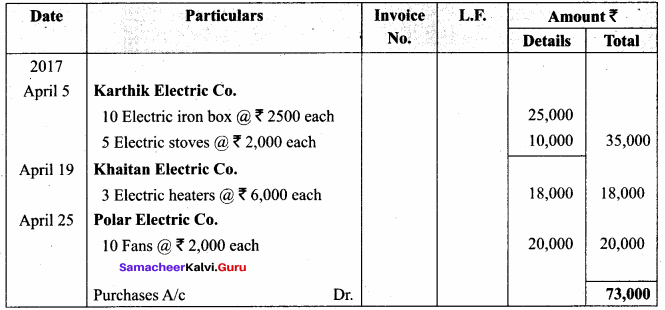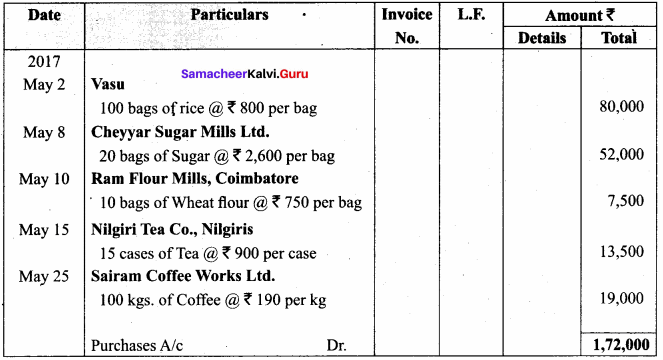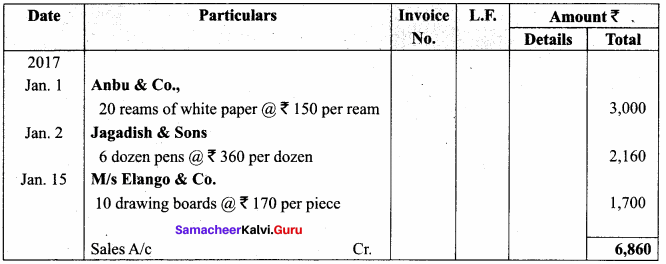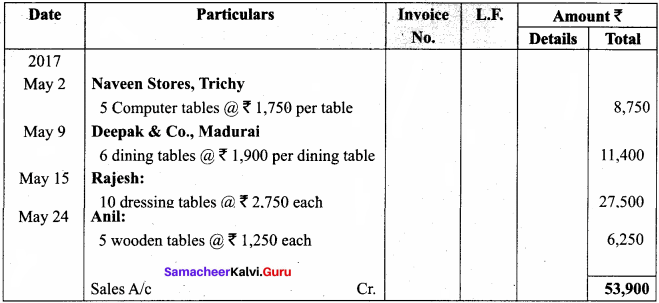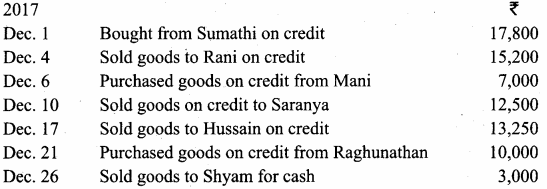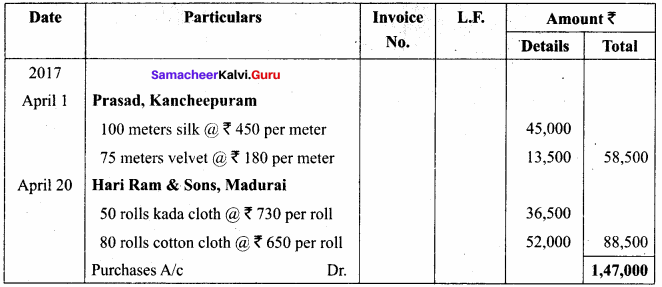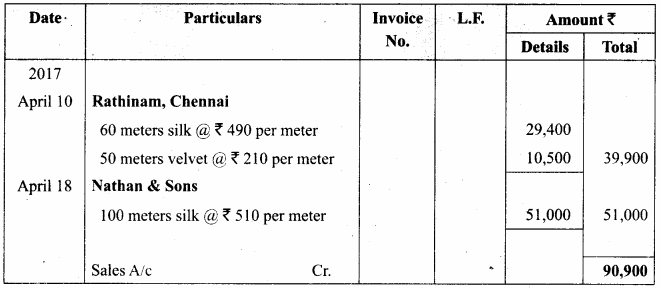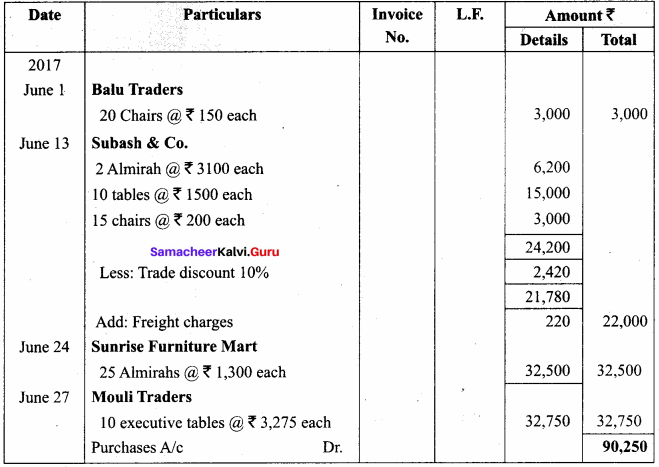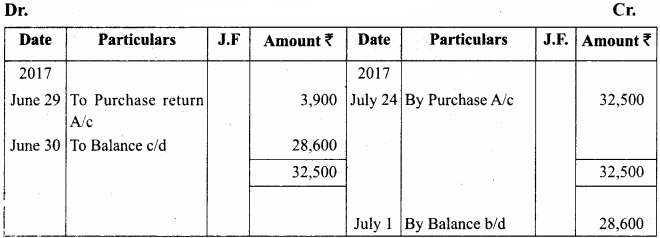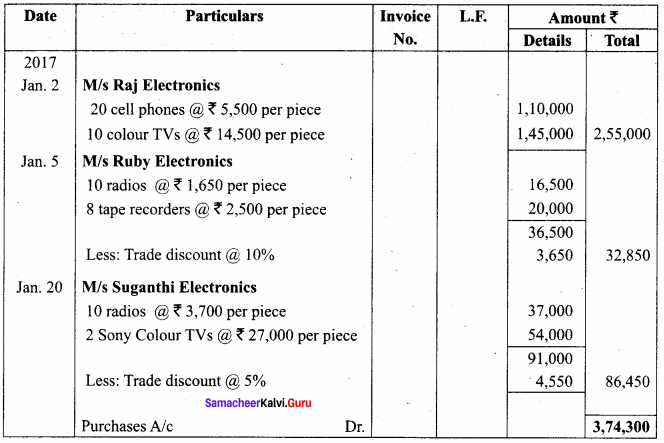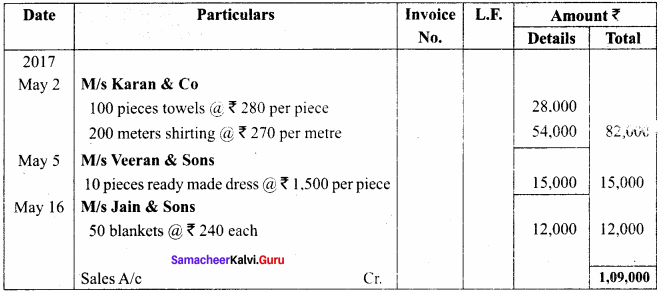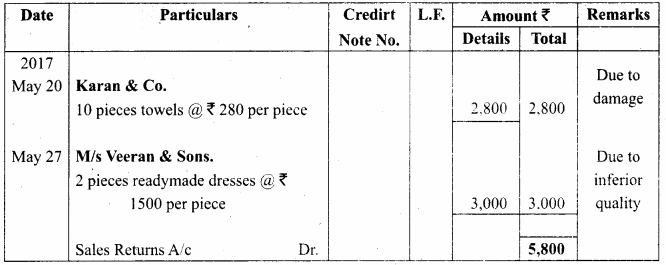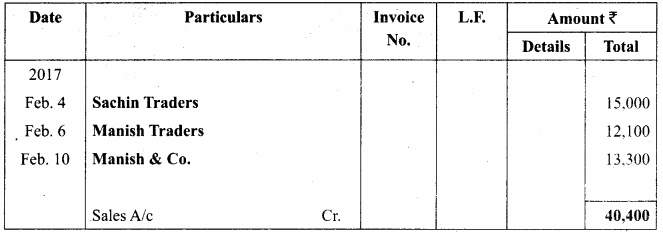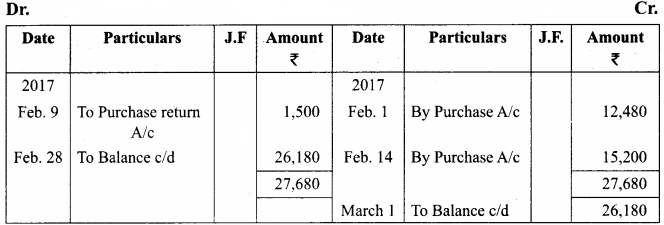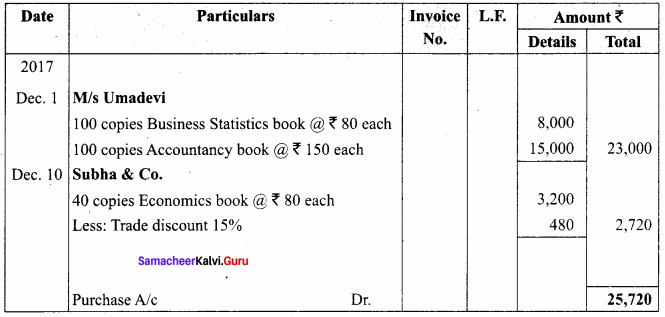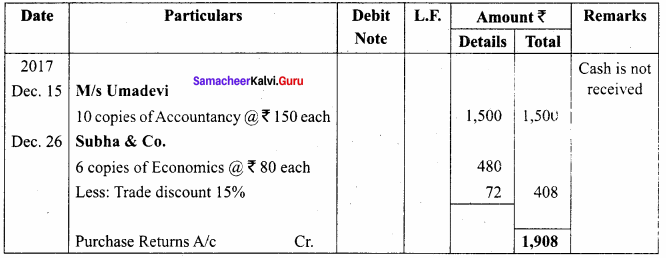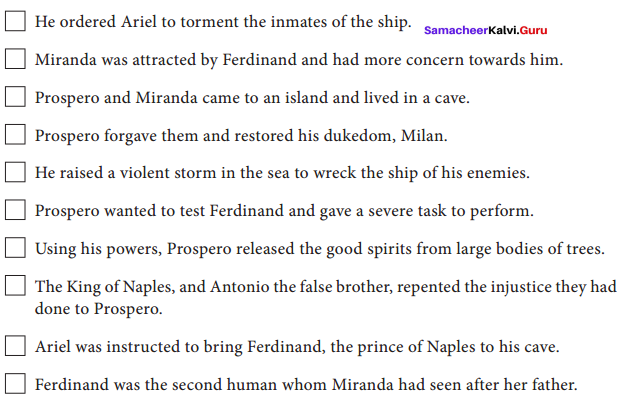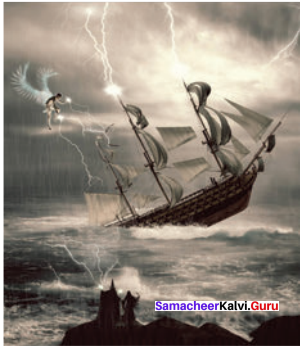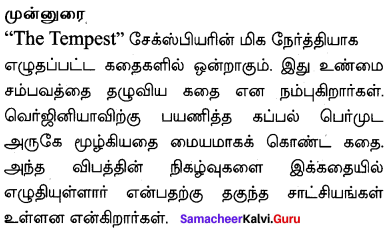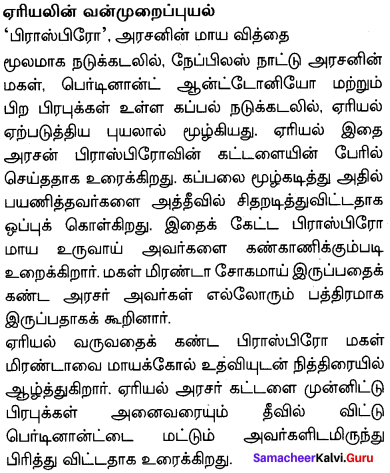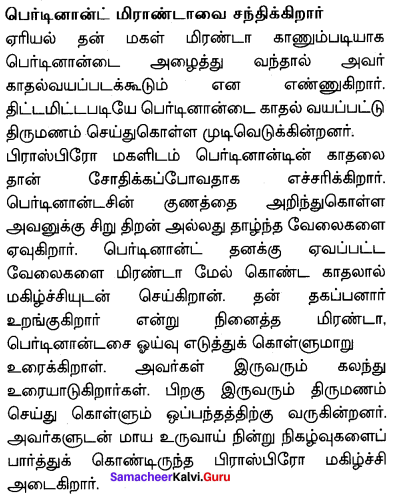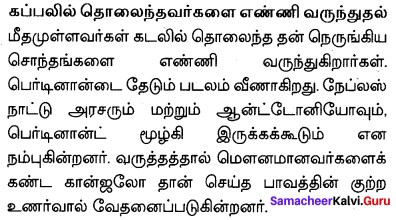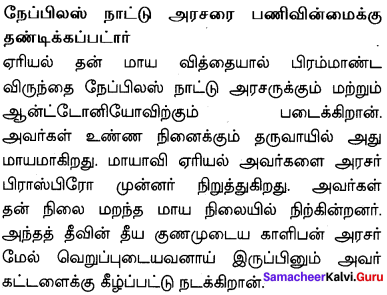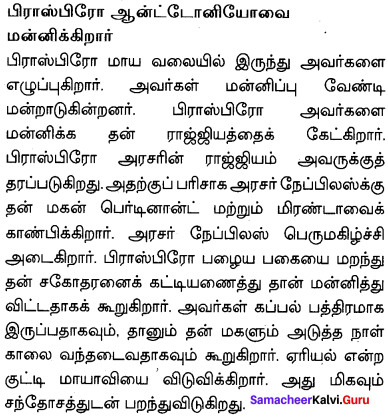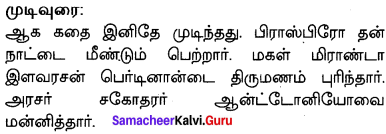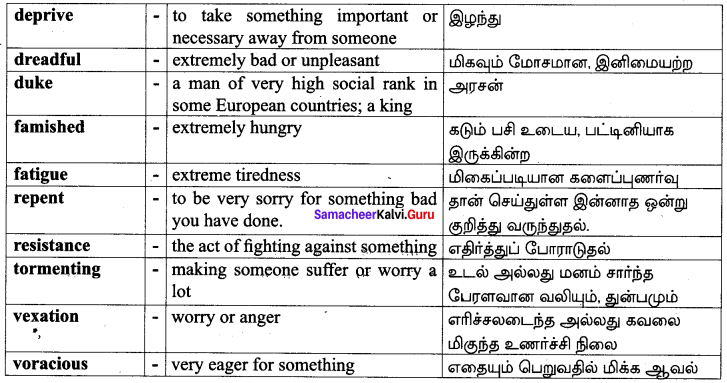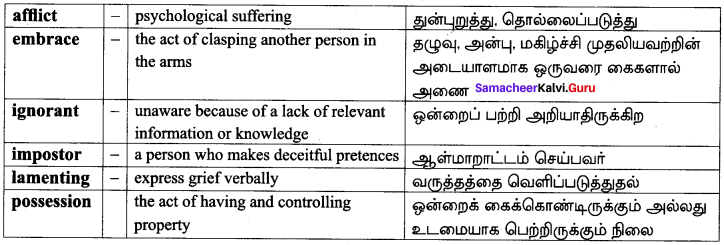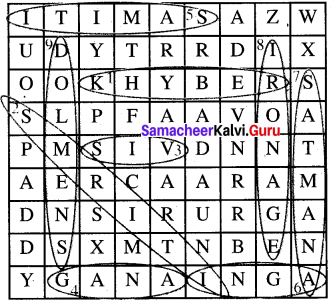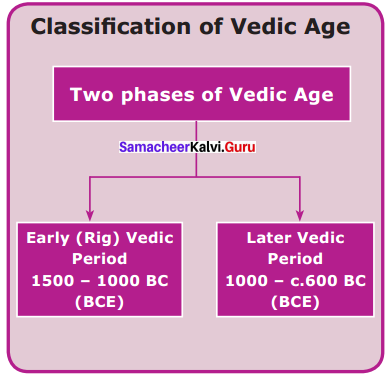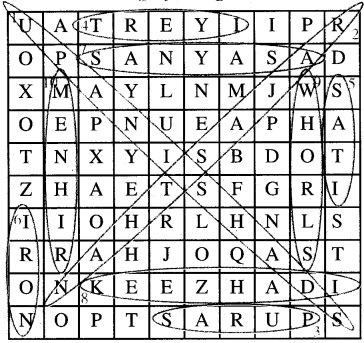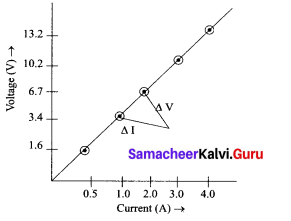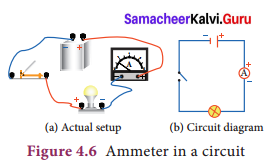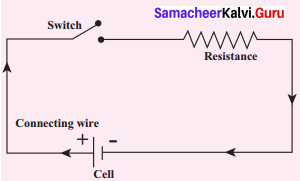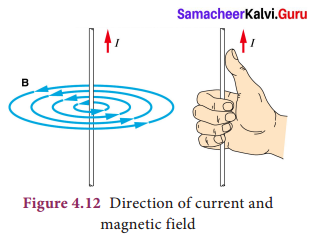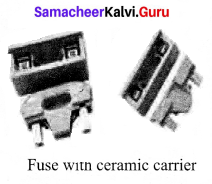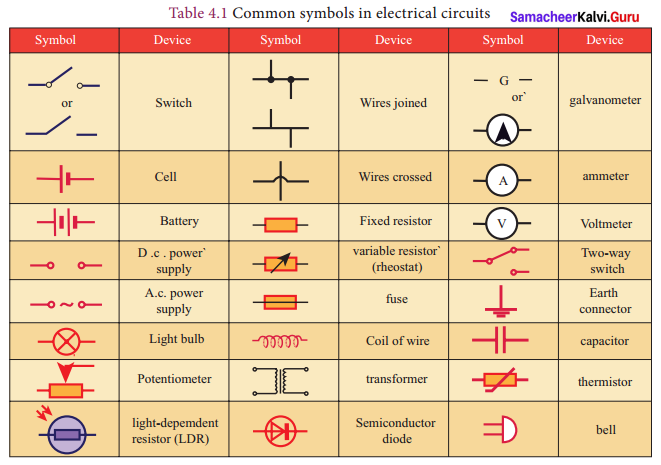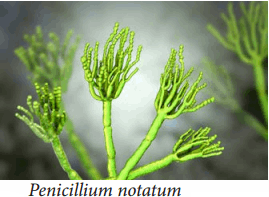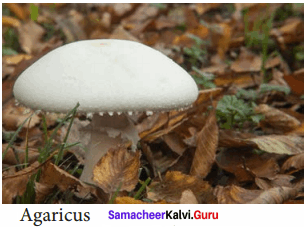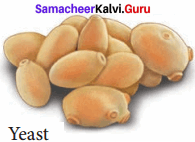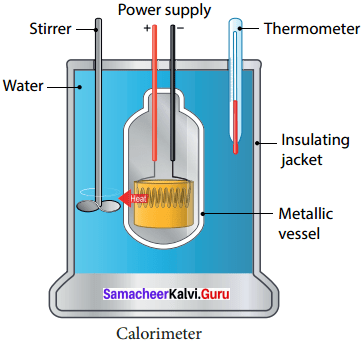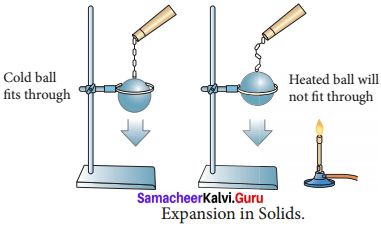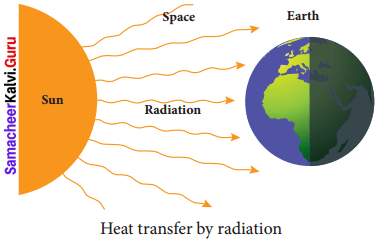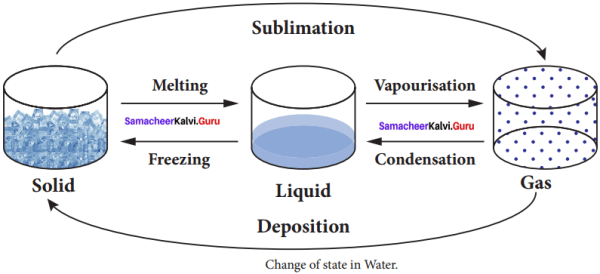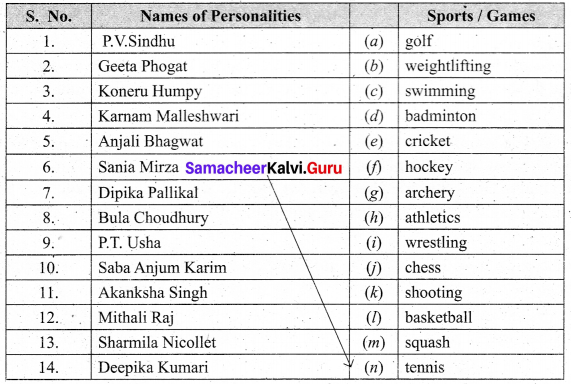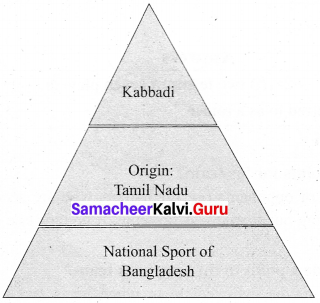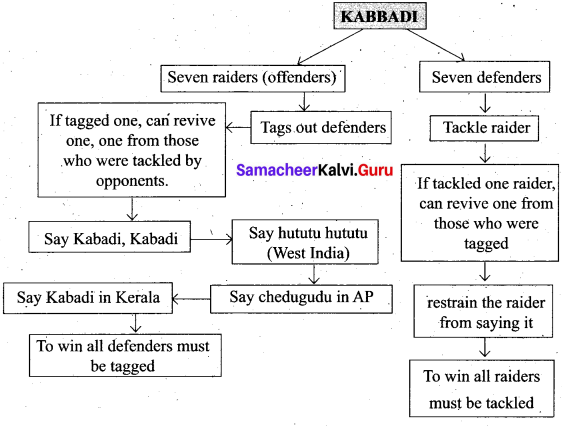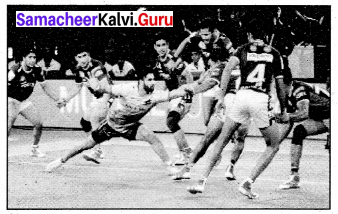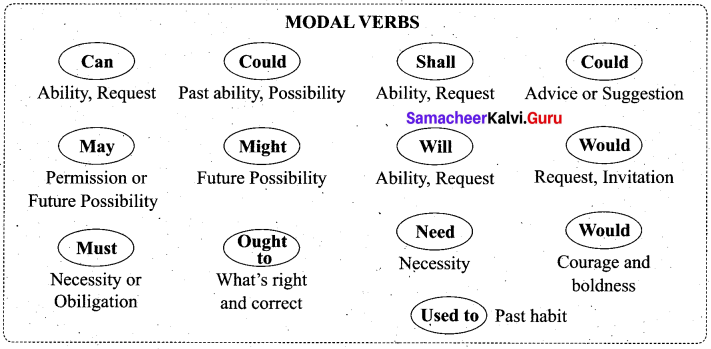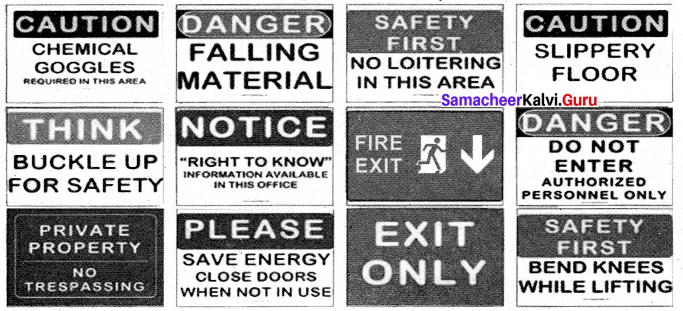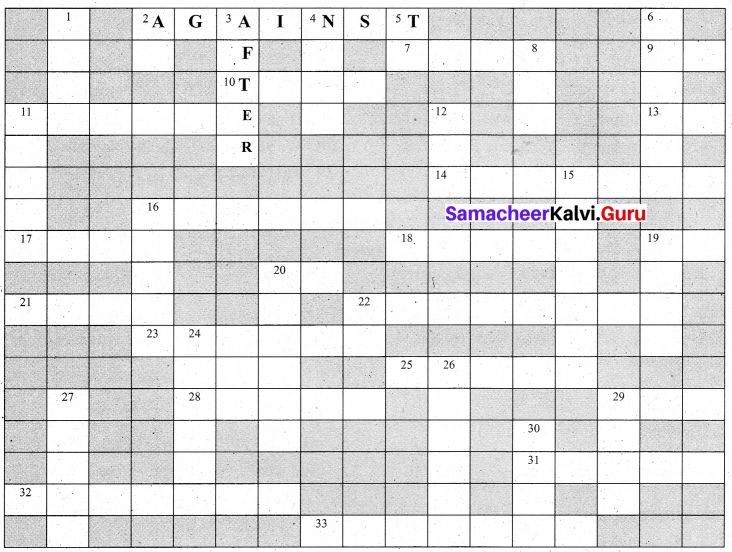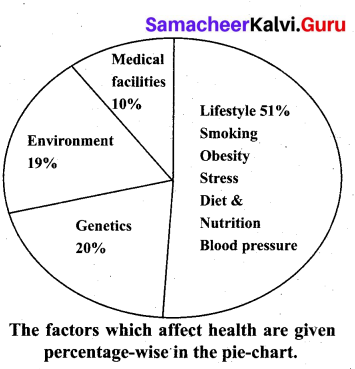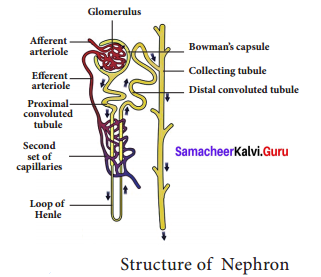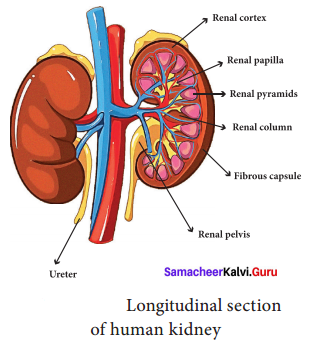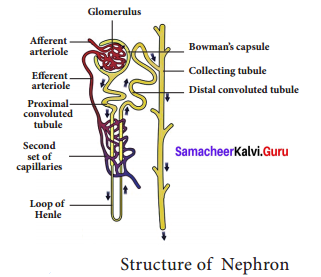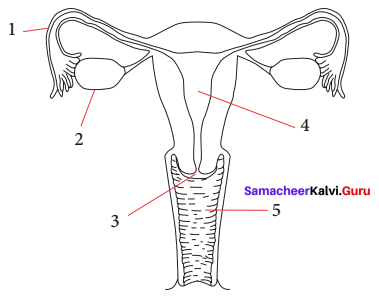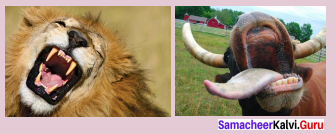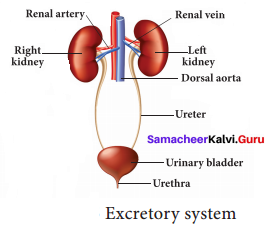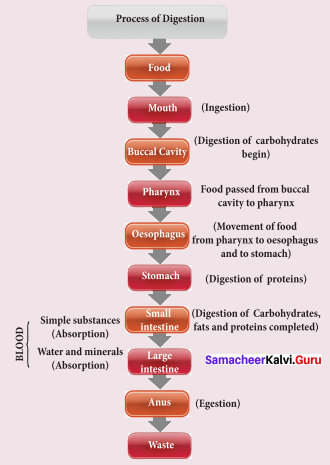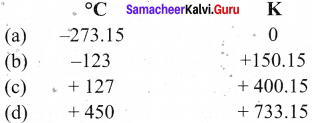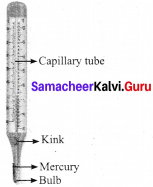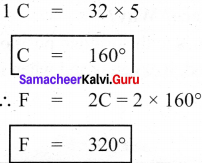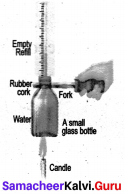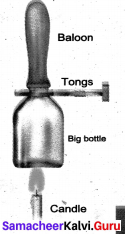You can Download Samacheer Kalvi 8th Social Science Book Solutions Guide Pdf, Tamilnadu State Board help you to revise the complete Syllabus and score more marks in your examinations.
Tamilnadu Samacheer Kalvi 8th Social Science History Solutions Term 1 Chapter 1 Advent of the Europeans
Samacheer Kalvi 8th Social Science Advent of the Europeans Textbook Evaluation
I. Choose the correct answer
Advent Of The European Questions And Answers Question 1.
Who laid the foundation of Portuguese power in India?
(a) Vasco da Gama
(b) Bartholomew Diaz
(c) Alfonso de Albuquerque
(d) Almeida
Answer:
(c) Alfonso de Albuquerque
8th Standard Social Science History Question 2.
Which of the following European Nation was the foremost attempt to discover a sea route to India?
(a) Dutch
(b) Portugal
(c) France
(d) Britain
Answer:
(b) Portugal
Samacheer Kalvi 8th Standard Social Science Solutions Question 3.
In 1453 Constantinople was captured by ……………
(a) The French
(b) The Turks
(c) The Dutch
(d) The British
Answer:
(b) The Turks
Samacheer Kalvi Guru 8th Social Science Question 4.
Sir William Hawkins belonged to …………….
(a) Portugal
(b) Spain
(c) England
(d) France
Answer:
(c) England
Samacheer Kalvi Guru 8th Social Question 5.
The first fort constructed by the British in India was ……………
(a) Fort St. William
(b) Fort St.George
(c) Agra fort
(d) Fort St. David
Answer:
(b) Fort St.George
Samacheer Kalvi 8th Social Science Book Solutions Question 6.
Who among the following Europeans were the last to come India as traders?
(a) The British
(b) The French
(c) The Danish
(d) The Portuguese
Answer:
(b) The French
Samacheer Kalvi 8th Social Science Solutions Question 7.
Tranqueber on the Tamilnadu coast was a trade centre of the ……………
(a) The Portuguese
(b) The British
(c) The French
(d) The Danish
Answer:
(d) The Danish
II. Fill in the Blanks
- National Archives of India (NAI) is located in ……………..
- Bartholomew Diaz, a Portuguese sailor was patronized by ………………
- The printing press in India was set up by …………….. at Goa in 1556.
- The Mughal Emperor …………….. permitted the English to trade in India.
- The French East India Company was formed by ……………..
- …………….. the King of Denmark issued a charter to create Danish East India company.
Answer:
- New Delhi
- King John II
- Portuguese
- Jahangir
- Colbert
- Christian IV
III. Match the following
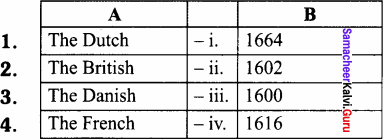
Answer:
- iv
- iii
- ii
- i.
IV. State true or false
Samacheer Kalvi 8th History Book Question 1.
Auto biography is one of the written sources.
Answer:
True
8th Social Science Samacheer Kalvi Question 2.
Coins are one of the material sources.
Answer:
True
8th History Book In Marathi Pdf Question 3.
Ananda Rangam was a translator served under British.
Answer:
False
Correct statement:
Ananda Rangam was a translator served under French.
Samacheer Kalvi Guru 8th Social Science Guide Question 4.
The place where historical documents are preserved is called archives.
Answer:
True
V. Consider the following statements and tick (V) the appropriate answer.
Samacheer Kalvi Class 8 Social Science Solutions Question 1.
(i) Governor Nino de Cunha moved Portuguese capital from Cochin to Goa.
(ii) Portuguese were the last to leave from in India.
(iii) The Dutch founded their first factory at Surat.
(iv) Sir Thomas Roe was sent to Jahangir’s court by King James I of England.
(a) i & ii are Correct.
(b) ii & iv are Correct.
(c) iii is correct
(d) i, ii & iv are correct.
Answer:
(d) i, ii & iv are correct
Samacheer Kalvi Guru 8 Social Science Question 2.
- Find out the wrong pair
- Francis Day – Denmark
- Pedro Cabral – Portugal
- Captain Hawkins – Britain
- Colbert – France
Answer:
1. Francis Day – Denmark
VI. Answer the following in one or two sentences.
Samacheer Kalvi.Guru 8th Social Question 1.
Give a short note on Archives?
Answer:
Archives is the place where historical documents are preserved. The National Archives of India (NAI) is located in New Delhi. It is the chief storehouse of the records of the government of India.
Question 2.
Write about the importance of Coins.
Answer:
Coins are a good source to know about administrative history. As compared to the literary sources the chances of manipulation is very less in the case of coins. Thus they are an authentic archaelogical source.
Question 3.
Why Prince Henry is called ‘Henry the Navigator’?
Answer:
Prince Henry of Portugal, who is commonly known as the “Navigator”, encouraged his countrymen to take up the adventurous life of exploring the unknown regions of the world.
Question 4.
Name the important factories established by the Dutch in India.
Answer:
After their arrival in India, the Dutch founded their first factory in Masulipatnam, (Andhra Pradesh) in 1605. The other important factories in India were Pulicat, Surat, Chinsura, Kasim bazaar, Patna, Nagapatnam, Balasore and Cochin.
Question 5.
Mention the trading centers of the English in India.
Answer:
The English had established their trading centres at Surat, Agra, Ahmadabad and Broach.
VII. Answer the following
Question 1.
Give an account of the sources of Modern India.
Answer:
1. The sources for the history of modem India help us to know the political, socio – economic and cultural developments in the country.
2. The Portuguese, the Dutch, the French, the Danes, and the English recorded their official transactions in India on state papers.
3. History can be written with the help of written sources and material sources.
4. Written Sources:
After the advent of the printing press, book were published in different languages people began to acquire knowledge easily in the fields like art, literature, history and science.
5. Written sources include Literatures, Travel Accounts, Diaries, Auto Biographies, Pamphlets, Government Documents and Manuscripts.
6. Archives:
It has main source of information for understanding past administrative machinery as well as a guide to the present and future generations related to all matters.
7. Material Sources:
Paintings and statues are the main sources of modem Indian history which provide information about national leaders and historical personalities and their achievements.
8. Historical buildings and museums preserve and promote our cultural heritage,
9. Coins are a good source to know about administrative history.
Question 2.
How did the Portuguese establish their trading centres in India?
Answer:
1. In A.D. 1498, Vasco da Gama reached Calicut, where he was cordially received by King Zamorin, the ruler of Calicut. A second Portuguese navigator, Pedro Alvares Cabral, sailed towards India in 1500.
2. Vasco da Gama came to India for the second time in 1501 with 20 ships and founded a trading centre at Cannanore.
3. One after another, they established factories at Calicut and Cochin.
4. King Zamorin attacked the Portuguese in Cochin, but was defeated.
5. Cochin was the first capital of the Portuguese East India Company.
6. In 1505, Francisco de Almeida was sent as the first Governor for the Portuguese possessions in India.
7. Almeida had the aim of developing the naval power of the Portuguese in India. His policy was known as the “Blue Water Policy”.
8. Sultans of Bijapur and Gujarat were also apprehensive of the expansion of Portuguese control of ports which led to an alliance between Egypt, Turkey and Gujarat against Portuguese invaders.
9. In a naval battle fought near Chaul, the combined Muslim fleet won a victory over the Portuguese fleet under Almeida’s son.
10. Almeida defeated the combined Muslim fleet in a naval battle near Diu, and by the year 1509, Portuguese claimed the naval supremacy in Asia.
11. The real founder of the Portuguese power in India was Alfonso de Albuquerque who captured Goa and established the Portuguese authority over Ormuz in Persian Gulf.
12. Governor Nino de Cunha moved capital from Cochin to Goa in 1530. In 1534, he acquired Bassein from Bahadur Shah of Gujarat, in 1537.
13. During the 16th century, Portuguese succeeded in capturing Goa, Daman, Diu, Salsette, Bassein, Chaul and Bombay on the western coast, Hooghly on the Bengal coast and San Thome on the Madras coast and enjoyed good trade benefits.
Question 3.
How did the British establish their trading centres in India?
Answer:
1. In 1600, Elizabeth, the Queen of England granted a charter to the governor and company of Merchants of London to trade with East Indies.
2. The Company was headed by a Governor and a court of 24 directors.
3. Captain Hawkins visited Jahangir’s court and secured permission to raise a settlement at Surat which was cancelled later.
4. In 1612, the English Captain Thomas Best, inflicted a severe defeat over the Portuguese in a naval battle near Surat.
5. The Mughal Emperor Jahangir permitted the English to establish their factory in 1613 at Surat, which became the headquarters of the English in western India.
6. Captain Nicholas Downton won another decisive victory over the Portuguese in 1614.
7. This enhanced the British prestige at the Mughal court.
8. In 1615, Sir Thomas Roe was sent to Jahangir’s court by King James I of England, who succeeded in concluding a commercial treaty with the emperor
9. Before the departure of Sir Thomas Roe, the English had established their trading centres at Surat, Agra, Ahmadabad and Broach.
VIII. Map skill
Question 1.
On the river map of India, mark the following trading centres of the Europeans.
- Calicut
- Cochin
- Madras
- Pondicherry
- Surat
- Chinsura
- Pulicat
- Calcutta
Answer:

IX. HOTs
Question 1.
How did the fall of Constantinople affect the European nations?
Answer:
- The fall of Constantinople was the end of an era for Europe as it severely hurt traders in the European region.
- The land route between India and Europe was closed. The Turks penetrated into North Africa and the Balkan Peninsula.
- It became imperative on the part of the European nations to discover new sea routes to the East.
X. Student Activity
Question 1.
Prepare a chart on the kinds of sources of Modern India.
Answer:
Kinds of Sources of Mordem India.
Hints:
Artifacts from Archeological sites coins, monuments, inscriptions, travelogues and autobiographies are primary sources of information for modem history, it also includes government reports, letter, photographs map diaries, news papers and films.
Samacheer Kalvi 8th Social Science History Advent of the Europeans Additional Questions
I. Choose the correct answer:
Question 1.
The ……………… of India attracted Europeans to this country.
(a) Technology
(b) Machinery
(c) Wealth
(d) River
Answer:
(c) wealth
Question 2.
Ananda Rangan’s ……………… reveal his profound capacity for political judgment.
(a) Diaries
(b) Books
(c) Paintings
(d) Coins
Answer:
(a) Diaries
Question 3.
The first issue of the calendar of Madras records was published in ……………….
(a) 1914
(b) 1917
(c) 1918
(d) 1920
Answer:
(b) 1917
Question 4.
…………….. help to preserve and promote our cultural heritage.
(a) Parks
(b) Books
(c) Beaches
(d) Museums
Answer:
(d) Museums
Question 5.
The national museum in ……………… is the largest museum in India.
(a) Delhi
(b) Chennai
(c) Mumbai
(d) Kolkata
Answer:
(a) Delhi
Question 6.
The Reserve Bank of India was formally set up in ……………..
(a) 1940
(b) 1938
(c) 1935
(d) 1936
Answer:
(c) 1935
Question 7.
The first paper currency was issued by RBI in ……………..
(a) 1940
(b) 1938
(c) 1937
(d) 1936
Answer:
(b) 1938
Question 8.
After the capture of Constantinople by the Turks, the land route between India and ……………. was closed.
(a) Pakistan
(b) Bangladesh
(c) Africa
(d) Europe
Answer:
(d) Europe
Question 9.
Bartholomew Diaz, was patronized by king ……………..
(a) George II
(b) Henry VIII
(c) John II
(d) Edward VII
Answer:
(c) John II
Question 10.
……………… maintained friendly relations with Vijayanagar Empire.
(a) Vasco da Gama
(b) Francisco de Almeida
(c) Alfonso de Albuquerque
(d) Nino de Cunha
Answer:
Question 11.
The ……………. brought the cultivation of tobacco to India.
(a) Portuguese
(b) Dutch
(c) British
(d) French
Answer:
(a) Portuguese
Question 12.
Due to the influence of the Portuguese ……………. religion spread in India’s western and eastern coasts.
(a) Islam
(b) Catholic
(c) Buddhism
(d) Jainism
Answer:
(b) Catholic
Question 13.
The ……………. followed the Portuguese into India.
(a) British
(b) French
(c) Danish
(d) Dutch
Answer:
(d) Dutch
Question 14.
The Dutch shifted their headquarters from Pulicat to …………… in 1690.
(a) Madras
(b) Bangalore
(c) Nagapattinam
(d) Madurai
Answer:
(c) Nagapattinam
Question 15.
The Dutch was completely wiped out by the year ……………..
(a) 1795
(b) 1695
(c) 1780
(d) 1800
Answer:
(a) 1795
II. Fill in the blanks:
- The Europeans came to know about the Wealth of India from the accounts of ……………
- ……………. was a translator to assist French trade in India.
- Tamil Nadu Archives has Dutch records which relate to …………… and coast.
- ………….. prepared the first issue of the calendar of Madras records.
- The …………… was empowered to issue Government of India notes.
- The first paper currency issued by RBI bore the portrait of ……………
- Fort ……………. was built by the British in Cuddalore.
- ………….. a Portuguese sailor reached the southern most point of Africa in 1487.
- Vasco – da Gama sailed from ………….. to India.
- In 1548, the Portuguese occupied …………….
- The Portuguese were defeated by the English in the battle of …………… in 1759.
- In Pulicat, the Dutch built the fort of …………….. in 1613.
Answer:
- Marco Polo
- Ananda Rangam
- Cochin, Coromandal
- Dodwell
- Reserve Bank of India
- King George VI
- St. Davids
- Bartholomew Diaz
- Mozambique
- Salsette
- Bedera
- Geldriaj
III. Match the following:

Answer:
- iv
- i
- ii
- iii
IV. State True or False
Question 1.
The archives at Lisbon, Goa, Pondicherry and Madras were literally store houses of precious historical information.
Answer:
True
Question 2.
All documents in Tamil Nadu Archives are in English.
Answer:
False
Correct statement: The most of the records in Tamil Nadu Archives are in English.
Question 3.
After his third voyage to India, Vasco da Gama, died in Cochin in 1524.
Answer:
True
Question 4.
The English East India company of established its supremacy in the Spice Islands.
Answer:
False
Correct statement:
United East India company of established its supremacy in the Spice Islands.
V. Consider the following statements and Tick (V) the appropriate answer.
Question 1.
(i) After 1858, India came under the direct administration of the British crown.
(ii) The settlement of Pondicherry was founded by Martin under a grant from Ibrahim Lodi, the ruler of Bijapur.
(iii) France was the last European country to come to India as trader.
(iv) The three Carnatic wars ruined the English.
(a) i & ii are Correct.
(b) ii & iv are Correct.
(c) i and iii are Correct
(d) i, ii and iv are Correct.
Answer:
(c) i and iii are Correct
Find out the wrong pair
Question 2.
- Fort St. David – Cuddalore
- Fort Geldria – Pulicat
- Fort St. Louis – Goa
- Fort St. George – Madras
Answer:
(3) Fort St. Louis – Goa
VI. Answer the following one or two sentences.
Question 1.
Name the powers which recorded their official transactions in India on State papers.
Answer:
The Portuguese, the Dutch, the French, the Danes, and the English recorded their official transactions in India on state papers.
Question 2.
What was the impact of the invention of printing press in India?
Answer:
Numerous books were published in different languages. Hence, people began to acquire knowledge easily in the fields like art, literature, history and science.
Question 3.
Name the languages other than English in which the records and documents are found in Tamil Nadu Archives.
Answer:
The collections include series of administrative records in Dutch, Danish, Persian and Marathi. Few documents are in French, Portuguese, Tamil and Urdu.
Question 4.
Write a short note on Dodwell.
- Dodwell prepared with great effort and the first issue of the calendar of Madras records was published in 1917.
- He was highly interested in encouraging historical researches. He opened a new chapter in the History of Tamil Nadu Archives.
Question 5.
Name a few historical buildings of India which depict styles and techniques of Indian architecture.
Answer:
Historical buildings like St. Francis Church at Cochin, St. Louis Fort at Pondicherry, St. George Fort in Madras, St. David fort in Cuddalore, India Gate, Parliament House, President House in New Delhi, etc are different styles and techniques of Indian architecture.
Question 6.
What does the term ‘audio – visual’ mean?
- Audio – visual means possessing both a sound and a visual component, such as slide – tape presentations.
- Audio – visual service providers frequently offer web streaming, video conferencing and live broadcast services. Television, films, internet are called ‘Audio – visual media’.
Question 7.
Name the important commodities traded by the Dutch.
Answer:
The most important Indian commodities traded by the Dutch were silk, cotton, indigo, rice and opium. They monopolized the trade in black pepper and other spices.
Question 8.
Why was the English East India Company engaged in rivalry with the Portuguese and the Dutch?
- The English East India Company remained engaged in rivalry with the Portuguese and the Dutch throughout the 17th century.
- In 1623, the Dutch cruelly killed ten English traders and nine Javanese in Amboyna. This incident accelerated the rivalry between the two Europeans companies.
Question 9.
Who permitted the French to establish a township near Calcutta?
Answer:
In 1673, the French obtained permission from Shaista Khan, the Mughal Subedar (governor) of Bengal to establish a township at Chandranagore, near Calcutta.
Question 10.
Write a short note on the Swedish East India Company.
- The Swedish East India Company was founded in Gothenburg, Sweden, in 1731 for the purpose of conducting trade with the Far East.
- The venture was inspired by the success of the Dutch East India Company and the British East India Company.
Question 11.
Why was the British Successful when compared to the other powers?
Answer:
The comparative success of the British over the Portuguese, the Dutch, the Danish, and the French was largely due to their commercial competitiveness, spirit of supreme sacrifice, government support, naval superiority, national character and their ascendency in Europe.

